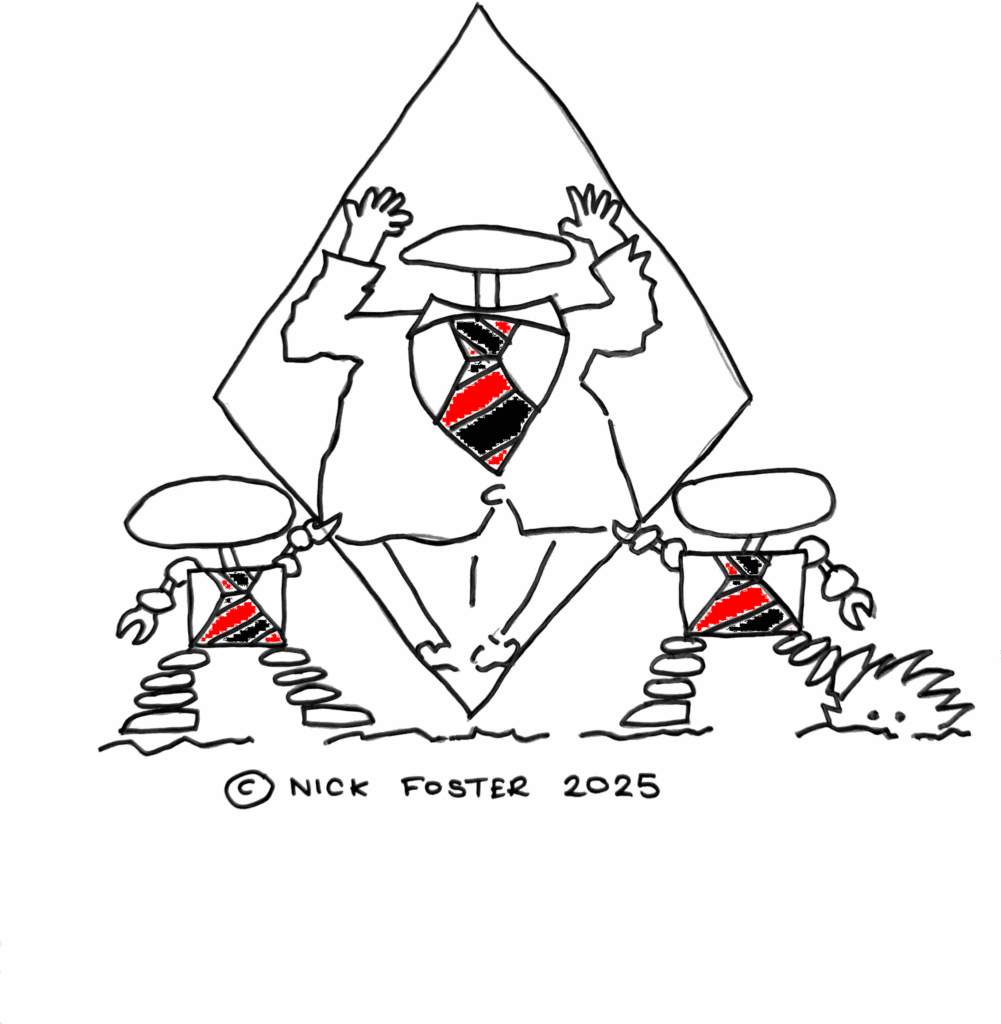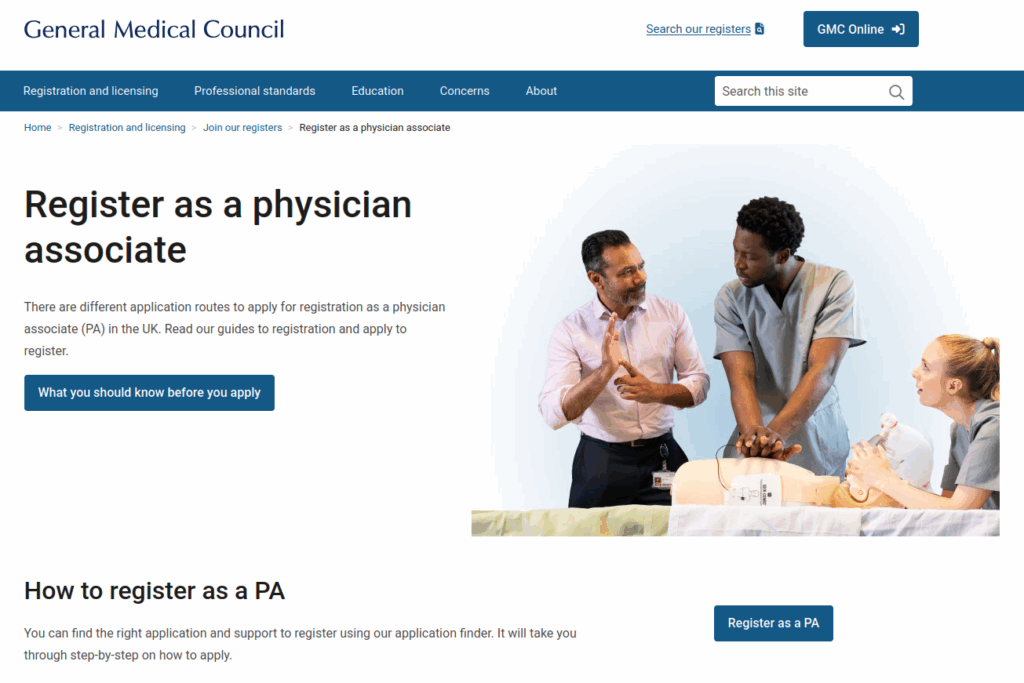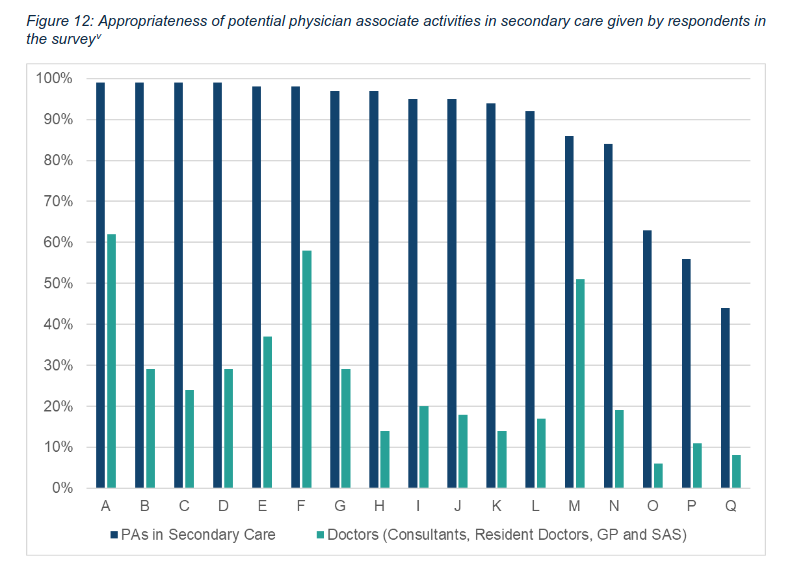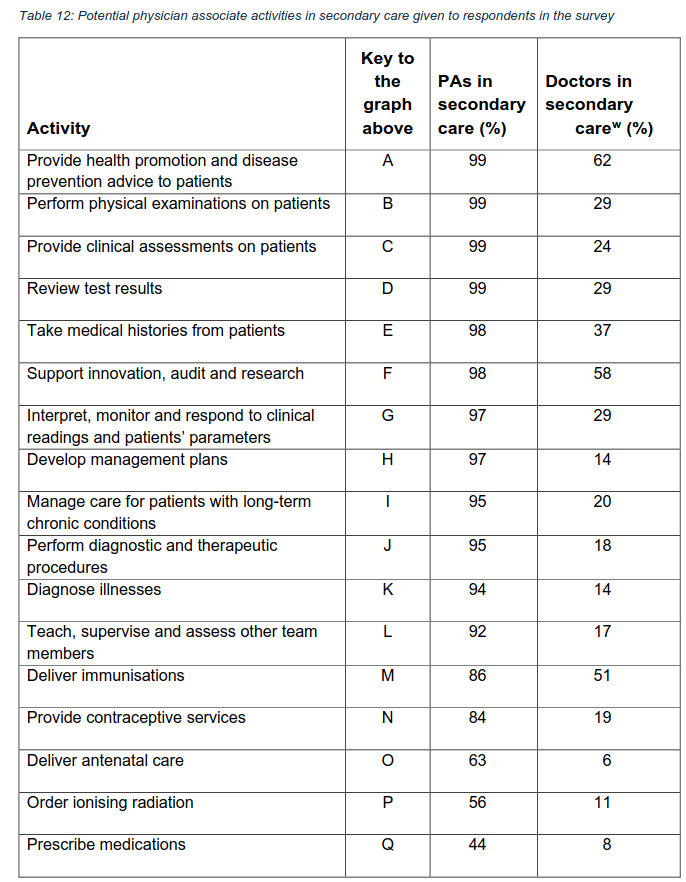
On Wednesday last week the report from the Leng Review into the safety and effectiveness of physician associates (PAs) and anaesthesia associates (AAs) was published. Although it concluded that:
Research on the safety and effectiveness of PAs and AAs was limited, generally of low quality and either inconclusive or demonstrated a mixed picture.
This apparently did not prevent Professor Leng from feeling able to go right ahead and make 18 recommendations. Neither did it prevent NHS England announcing the same day that it would be expecting all PAs and AAs in the NHS to immediately:
- Take on the new names for their roles of physician assistant and physician assistant in anaesthesia respectively;
- No longer triage patients or see “undifferentiated” patients.
The rationale for the first of these was the fear that PAs and AAs were being confused with doctors. That this has been addressed by immediately making PAs and AAs much more confusable with each other is just one of the many hilarious things about this report. They also appear to have forgotten to let the General Medical Council (GMC) know, as their website still looks like this:

Then there is the meticulously recorded bile directed at PAs and AAs and their capabilities throughout what is described all over the website as an “independent” report. There were several charts of the opinions of PAs and AAs about their ability to carry out their duties compared to those of doctors. Here is one of them:


The fact I feel able to describe this as mostly bile is the template job descriptions at Appendix 5 of the Leng report. The one for PAs in secondary care includes the following principal duties and responsibilities:
- carry out assessments of patient health by interviewing patients and performing
physical examination including obtaining and updating medical histories (looks like B and E); - order and perform agreed diagnostic tests including laboratory studies and
interpret test results (looks like J); - perform basic therapeutic procedures by administering all injections and
immunisations, suturing and managing wounds and infections (looks like M); - help to develop other members of the multidisciplinary team by providing
information and educational opportunities as appropriate (looks like L).
So even the Leng Review appears to have concluded that many of the doctors’ opinions polled here are ridiculous.
Of course I am lumping all doctors together here because the Leng Review does for the most part. There is one sentence where it is admitted that senior doctors, including GPs, tended to be more positive than resident doctors, but this is not really quantified.
The Leng Review will not be the last of its kind. It has taken up the concerns of a threatened profession and worked with them to connive in the othering of another sub-profession (set up, as admitted in the Leng Review report itself, by the Department of Health under, in the case of PAs, a competency framework in conjunction with the Royal Colleges of Physicians and General Practitioners) rather than tackle the actual threats the profession faces. As Roy Lilley wrote:
The BMA can stand in the way, or stand at the front, shaping how technology and new roles like PAs can improve care, close gaps, and make healthcare safer and smarter.
History teaches us that you can’t halt progress by breaking the machinery or driving new careers into a cul-de-sac.
So why are the doctors, particularly resident doctors (formerly known as junior doctors), so offended by the use of PAs and AAs in the NHS? Is it really about safety and effectiveness? Or is it that the British Medical Association (BMA) has finally lost the trust of its more junior members after years of inadequate representation and now is throwing its weight around with the campaign against PAs and AAs and now the resident doctor strike in a desperate attempt to convince them that the reason they are paid less than PAs and can’t get a job after graduation is not the fault of the BMA, but that of the Government, PAs and AAs?
As the Leng Review admits:
Since the early 2000s, and in response to increasing workforce pressures, there has been a growing recognition of the PA role across the globe as a flexible way to address doctor shortages and improve access to healthcare. Today, PAs or their equivalents are employed in over 50 countries, although the role is often adapted locally to meet specific healthcare system needs.
Is it perhaps this very flexibility which is the threat here, when NHS England are already reviewing postgraduate medical training due in large part to resident doctors’ “concerns and frustrations with their training experience”?
The doctors are not the only threatened profession. According to The Observer this week:
The big four accounting firms – Deloitte, EY, PricewaterhouseCoopers and KPMG – posted 44% fewer jobs for graduates this year compared with 2023.
These are the big beasts for finance and actuarial graduates and tend to set the market for everyone else, so these are big changes. Ian Pay of the ICAEW’s quote from the article is even more alarming:
Historically, accountancy firms have typically had a pyramid structure – wide base, heavy graduate recruitment. Firms are now starting to talk about a ‘diamond model’ with a wide middle tier of management because, ultimately, AI is not sophisticated enough yet to make those judgment calls.
A diamond model? That surely only makes sense for those at partner level currently interested in the purchase of diamonds? Sure enough, the article continues:
Cuts to graduate cohorts since 2023 have ranged from 6% at PwC to 29% at KPMG. According to James O’Dowd, founder of talent adviser Patrick Morgan, these are accompanied by senior employees being paid more and more job offshoring. Up to a third of some firms’ administrative tasks are carried out in countries with lower labour costs such as India and the Philippines.
So what happens when AI is sophisticated enough to make those judgement calls, calls which are often sophisticated forms of pattern spotting and which, quite frankly, AI systems are already much better than humans at in many cases already? Will the diamond model collapse still further into a “T-model” perhaps, with the very senior survivors being paid even more? Don’t expect labour costs in India and the Philippines to remain lower for very long as demand increases from their own economies as well as ours.
And the most important question? What then? Who will the senior employees who seem to be doing so well out of this at the moment be in 20-30 years’ time? Where will they have come from? What experience will they have and how will they have gained it when all the opportunities to do so have been given to the system in the corner which never gets tired, only makes mistakes when it is poorly programmed or fed poor data, and never takes study leave at the financial year end?
So Medicine, Finance and now Law. Richard Susskind has been writing about the impact of AI on Law, and with his son Daniel, on other professions too for some time now. The review of his latest book, How To Think About AI, has the reviewer wondering “Where has Reassuring Richard gone?”. In his latest book, Susskind says:
“Pay heed, professionals – the competition that kills you won’t look like you.”
So probably a threatened profession there too then.
In the 1830s and 1840s, according to Christopher Clark’s excellent Revolutionary Spring, the new methods of production led to “the emergence of a non-specialised, mobile labour force whose ‘structural vulnerability’ made it more likely that they would experience the most wretched poverty at certain points in their lives.” The industrialised economies changed beyond recognition and the guilds representing workers, with skills the need for which were being automated away, retreated to become largely ceremonial.
Then the divisions were those of class. This time they appear to be those of generation. Early career professionals are seeing their pay, conditions and status under threat as their more senior colleagues protect their own positions at their expense.
It remains to be seen what will happen to our threatened professions, but it seems unlikely that they will survive in their current forms any more than the jobs of their members will.
